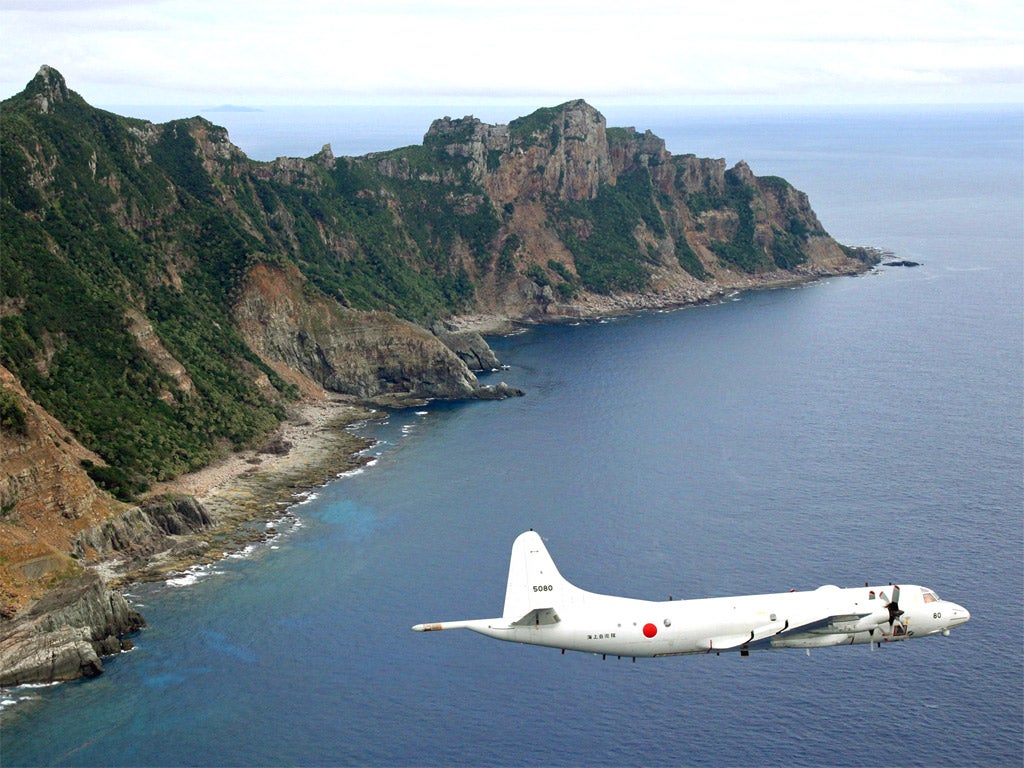Fears grow of clash as Japan and US stoke war of the skies with China
US B-52s and Japanese civilian aircraft fly through Beijing’s ‘air defence zone’ over disputed islands

The looming struggle for regional supremacy in the Asia-Pacific is not simply a clash over strategic stretches of land and sea, but also over the skies above them. This week, the US and Japan have both defied new Chinese demands by flying aircraft, unannounced, into disputed airspace over a cluster of controversial islands in the East China Sea.
On Saturday, Beijing published a map of its new “air defence identification zone”, with rules requiring foreign aircraft to notify the Chinese military before entering the area. The zone overlaps with an existing Japanese air defence zone, and takes in the islands known to the Chinese as Diaoyu, and to the Japanese as Senkaku, which are subject to competing claims from the two Pacific nations.
According to a report by The Wall Street Journal, two unarmed US B-52 bombers from Andersen Air Force Base in Guam entered the new Chinese zone on Monday evening, as part of a long-planned exercise, and flew around 120 miles from the uninhabited islands. Today, the Japanese government ordered its civilian carriers to disregard the new Chinese rules; planes from the ANA and JAL airlines both passed through the area without incident.
Though the defence ministry in Beijing had warned that it would take “defensive emergency measures” against aircraft that refused to comply with its new strictures, the Chinese military made no attempt to contact the B-52s. The ministry later released a statement saying it had monitored the US bombers.
The B-52 flight may have raised tensions with the Chinese, but it also represented a show of US support for the other countries in the region, such as South Korea and Japan. The US Defence Secretary Chuck Hagel said before the exercise that Washington would not conform to the new rules set by the Chinese. “We view this development as a destabilising attempt to alter the status quo in the region,” he said.
The Chinese foreign ministry described Mr Hagel’s statement as “irresponsible”, but the US response was echoed by China’s neighbours. The Japanese chief cabinet secretary, Yoshihide Suga, told reporters at a Tuesday news conference that the new Chinese measures had “no validity”. The new US envoy to Tokyo, Caroline Kennedy, in her first speech as ambassador, said the Chinese actions would “undermine security” in the region. South Korea’s deputy defence minister, Yoo Jeh-Seung, said his government would also refuse to recognise the new Chinese zone.
In Beijing, the foreign ministry spokesman Qin Gang was asked what sort of military action China intended to take against foreign aircraft that entered the “air defence identification zone” unannounced. “The Chinese side will make an appropriate response according to the different circumstances and the threat level that it might face,” he replied.
Chinese social media users appeared unimpressed with the military’s lack of response to the B-52 flights, with many demanding stronger action. Beijing commonly reacts to such criticism via its proxies in the state-run media, yet even before the US bombers’ flights became public knowledge, the People’s Liberation Army Daily warned that without a robust defence of the air defence zone, the newly drawn map would be nothing more than “armchair strategy”.
The competitive waters of the East and South China Seas contain rich natural resources, including fishing stocks and hydrocarbon reserves. The long-standing dispute over the Senkaku archipelago was stoked in 2012, when Japan bought three of the rocky islands from private owners, provoking the Chinese, who stepped up their military activities in the area.
At one point the Japanese threatened to shoot down an unidentified Chinese drone close to the islands, which Beijing warned would constitute an “act of war”.
The new zone would have been approved by the Chinese leader Xi Jinping, who was appointed the Communist Party’s top official in 2012. The word from the White House was that the dispute between China and its regional rival ought to be solved by diplomacy, not force. President Barack Obama was on a visit to California this week, where a White House spokesman told reporters the new Chinese policy was “unnecessarily inflammatory”.
Join our commenting forum
Join thought-provoking conversations, follow other Independent readers and see their replies
Comments
Bookmark popover
Removed from bookmarks